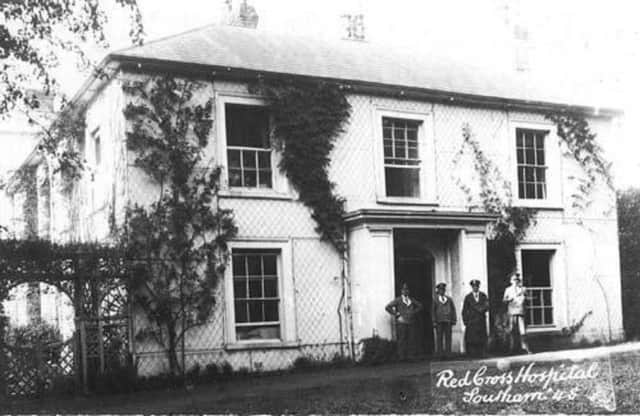Centenary of first poison gas attack


The gas attack took place on April 22 1915 during the Second Battle of Ypres in which the 1st Battalion of the Royal Warwicks had more than 500 casualties, with 16 officers killed or missing.
One of those killed at Ypres was Harry Askew from Leamington Road, Southam, who was serving with the 1st Bn of the Rifle Brigade.
Advertisement
Hide AdAdvertisement
Hide AdHistorian Alan Griffin, whose grandfather Private Ralph Griffin was killed in action in 1915, described the fate of Harry Askew in his book Lest We Forget - The Southam Men in the Great War, published by Brewin Books in 2002.
He wrote: In late April the British took over five miles of former French front line to the north-east of Ypres and it was here on the afternoon of April 22 that the Germans used poison gas for the first time.
At dawn on April 27 the Germans opened up heavy shelling on the British positions and this continued day and night for the next two days. Harry Askew was one of those killed on April 27.
Harry enlisted at Winchester at the start of the war and had been posted to France in January 1915. His remains were never recovered and his name is one of over 55,000 carved on the Menin Gate at Ypres.
Advertisement
Hide AdAdvertisement
Hide AdAt home: by the end of 1915, and for the first time in living memory, there was an acute shortage of labour on the land. George Smith who farmed at Holt Farm, Southam, placed his property and all his livestock in the hands of a Banbury auctioneer. His reason for giving up farming was that his only son was joining up. Children were excused school to help with potato picking and the many labour-intensive jobs that went with agriculture.
The Army Council allowed soldiers to help with work on the land and it wasn’t long before a new kind of agricultural worker began to appear on local farms in the form of Land Girls.
Pupils at Southam Girls School were thanked for foregoing their prizes for the year, instead donating the money to the Southam Hospital Supply depot. A framed certificate was also presented to the school in recognition of the girls’ efforts in collecting over 800 eggs for soldiers and sailors.
Many of the more commodious private houses up and down the land were taken over for use as temporary hospitals. One of these, The Springs in Southam, was turned into the Southam VAD Hospital, which opened on April 7 1917.